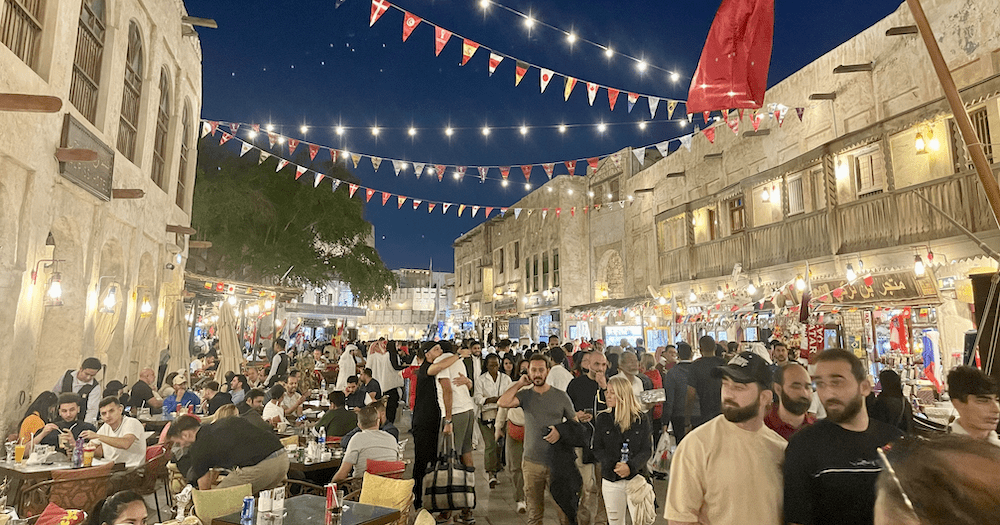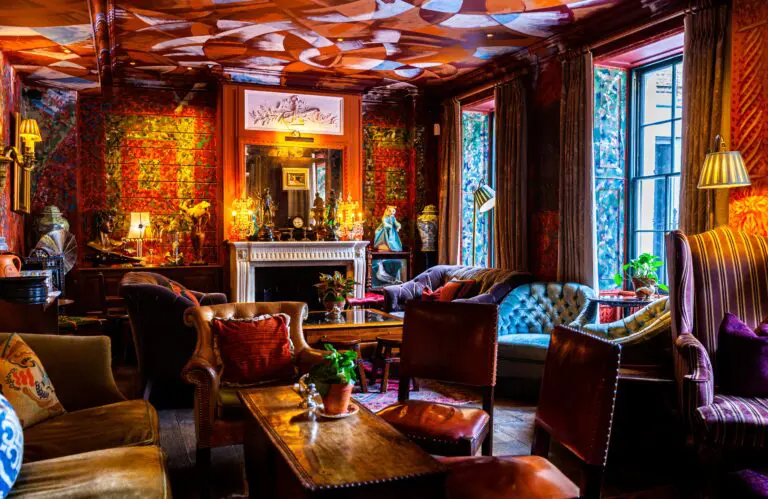My wife has gift-giving down to an art form, such is her knack for finding the perfect present. So when she asked me not to return from my recent visit to Qatar without a souvenir, the pressure was on. Until it quickly evaporated.
Like its museums, restaurants, hotels and other things travellers seek, it turns out Qatari capital Doha does shopping really well too. And I’m not talking about its shiny shopping centres – although it has those too (like West Bay’s impressive City Centre Mall). Instead, my market of choice is Doha’s superb Souq Waqif.
Centred around a group of traditional Qatari buildings dating back to the late 19th and early 20th centuries, the Souq (‘street market’) is home to endless eateries and cafes, shops filled with spices, curios and handicrafts, and hidden gems that only reveal themselves upon exploration of its laneways.
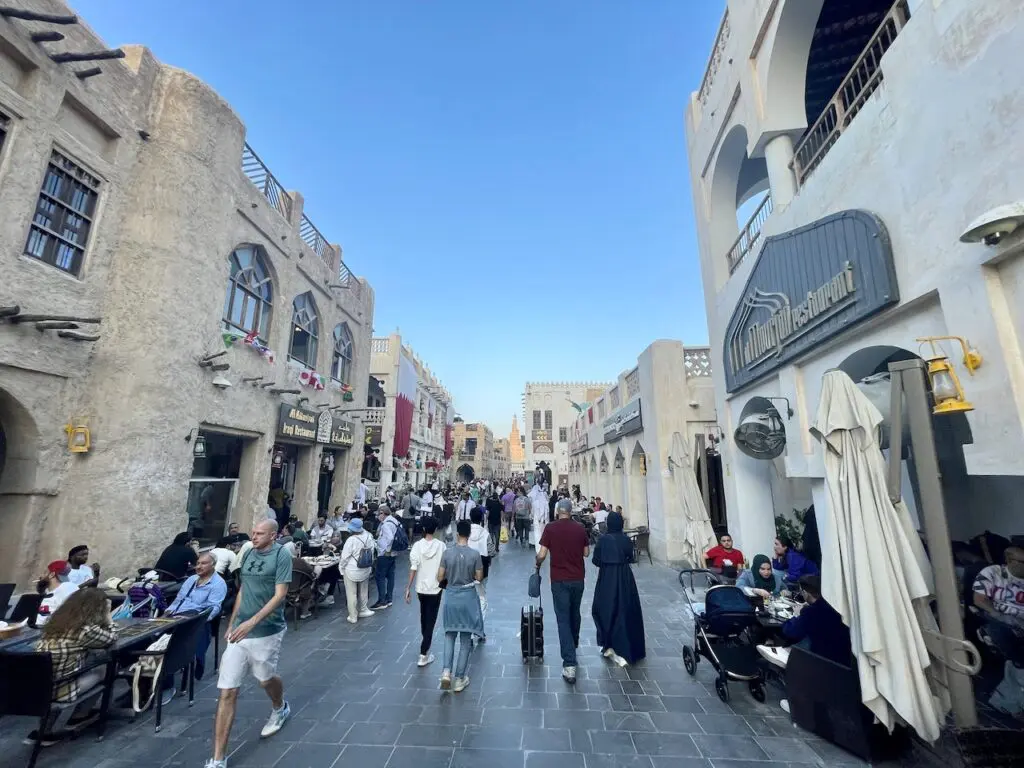
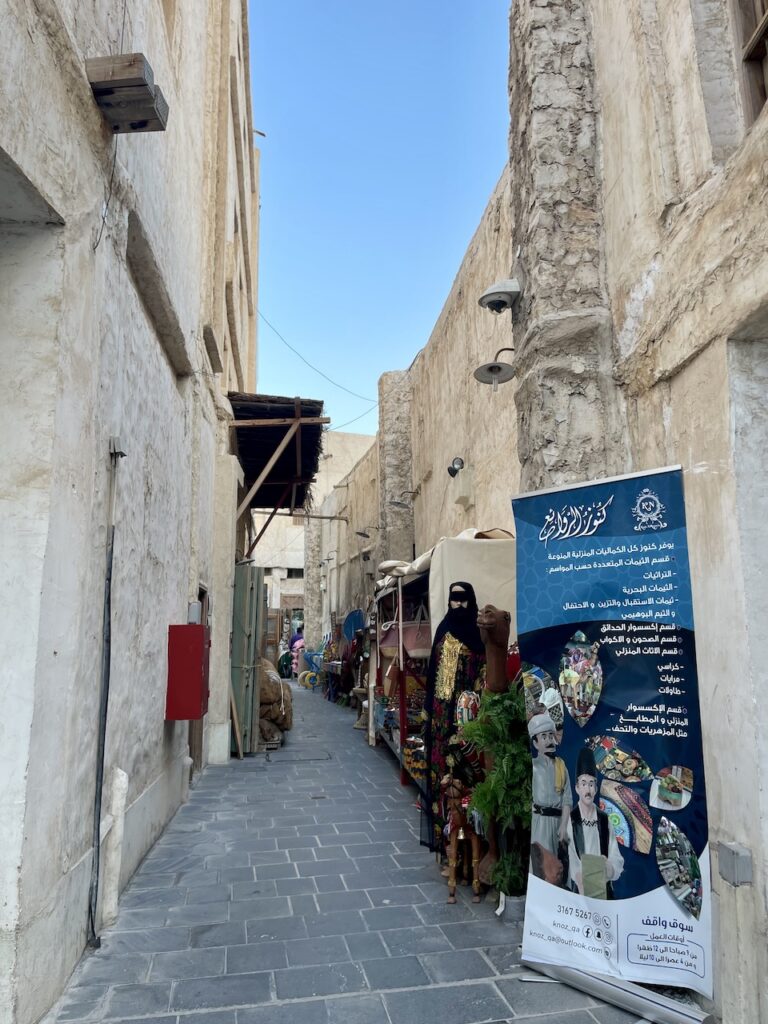
If you’re willing to look, you’ll also find a present for a demanding partner. And even if you don’t find it, browsing here is so much fun, you won’t care. Almost.
Part outdoors, part indoors, the Souq is worth a visit at any time of the day. But it is at night that it shines brightest.
While I wander its walkways, daytime turns to dusk and then darkness, as sunshine is replaced by the glow of thousands of lamps and hundreds of shopfronts.
In the cool of the evening, visitors and locals flock to its streets to meet, mingle and people-watch. And there’s no shortage of that.
Once quiet restaurants, cafes and shisha lounges begin to bustle with business, while everywhere vendors hawk their goods with gusto.
Thirsty, I pop into Tea Time – an evidently popular beverage chain – for a quick, refreshing and cheap masala chai.
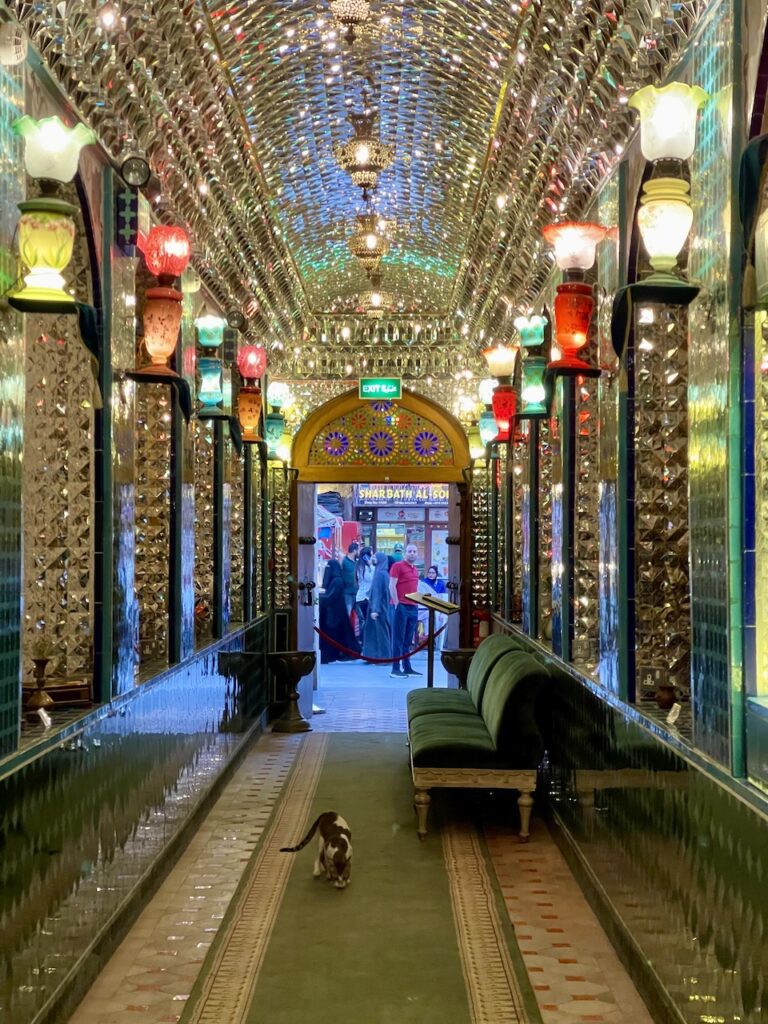
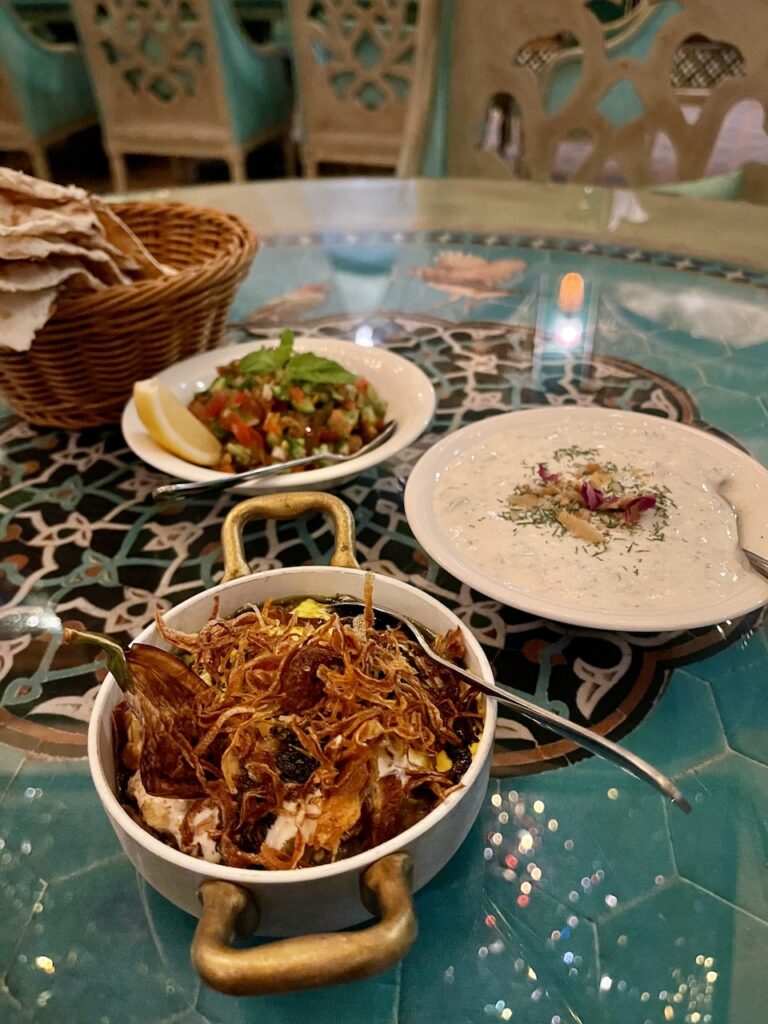
Food for thought
Shortly afterwards, I stop by Persian eatery Parisa for dinner. Here, I’m led down a long sparkling hallway to a beautiful restaurant, where I’m served a banquet of flatbread, baba ganoush and other dips, followed by a vegan stew with fragrant rice. The spread is delicious and the service as warm as I’ve come to expect in Qatar.
Back outside, Turkish ice cream stands serve flavours both familiar and foreign, while countless confectionary stores tempt those with a sweet tooth. They like their desserts in Doha. They really like them.
Local guide Moustafa tells me Souq Waqif means “the standing market” because those who visited would waste little time moseying about. So in the spirit of the Souq’s early patrons – and sugared up – I get a wriggle on.
And I’m soon rewarded for my endeavour as I stumble upon the store where I find my wife’s eventual gifts: a stunning locally made necklace and two rings that go for around 250 Qatari riyals (around AU$100) all up.
But it’s the journey I’ve taken to get here that I’ve enjoyed the most. And the satisfaction of getting one up on my wife. Thanks to this wonderful Souq.

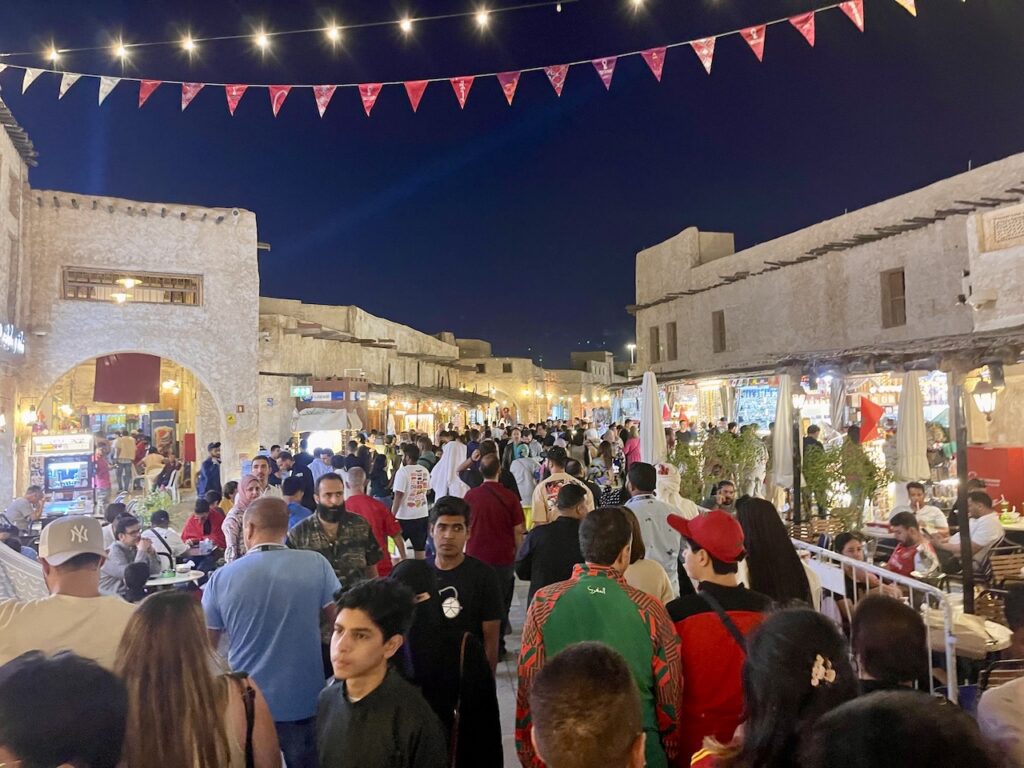
Old to new
Adjacent to the Souq is the new Msheireb district. With its cluster of high-rises and modern architecture, Msheireb is the antithesis of the older Souq district. But it’s an area worth visiting for its contemporary cool and museums like Radwani House, a restored, century-old home that gives guests glimpses of how family life evolved in Qatar.
Moustafa says the Msheireb name comes from “drinking water” as in days past tribes and camels would drink from its wells. However, it’s also called “The Sustainable City of Msheireb”, he says, thanks to its smart buildings and eco-conscious design.
A free tram, but one that gets pretty packed, will also whisk you on a loop of the area.

Mega museum
On the other side of the Souq – within walking distance – is Qatar’s most visited single attraction: the Qatar National Museum.
Based on the desert rose, the astonishing exterior was designed by the same architect behind the Abu Dhabi Louvre. But it’s equally impressive inside.
Detailing the history of Qatar from prehistoric times to the digital age, the museum is a must-see for anyone wanting to gain a good understanding of the country.

One of its unique quirks is its floor, which slopes (very gently) downwards from the museum’s top level through each exhibit until the exit on the ground floor. Spend a couple of hours here at least.
Also within walking distance of the Souq is the Museum of Islamic Art, which is housed in another remarkable building on its own artificial island at one end of the seven-kilometre-long Corniche.
Speaking of, be sure to take a walk along the magnificent Corniche waterfront area for the perfect postcard pics of traditional dhow boats with the West Bay skyscrapers in the distance.
And if you want to see one of those high-rises up close, use the excellent new Metro train system. It’s quick, safe and cheap.
Where to stay?
I stayed at the Kempinski Marsa Marzai, which is on a private island within an island called The Pearl. But there are a plethora of properties in Doha, be they in The Pearl, the older Souq area or the more modern West Bay. Read our review of the Kempinski.
How to get here?
Qatar Airways has nonstop flights between Doha and Sydney, Melbourne, Brisbane, Perth and Adelaide. Read our flight test of QR’s business class offering.
For more information on Qatar, click here.
Or read about whale shark watching on a Qatari stopover.



